TruthCasting
Creating the landing page for a remodeled Church streaming service that allows users to watch their sermons from home.
- Wireframing
- Competitor Research
- Hi-Fi Prototype
- Hand Off
- Branding
- Content
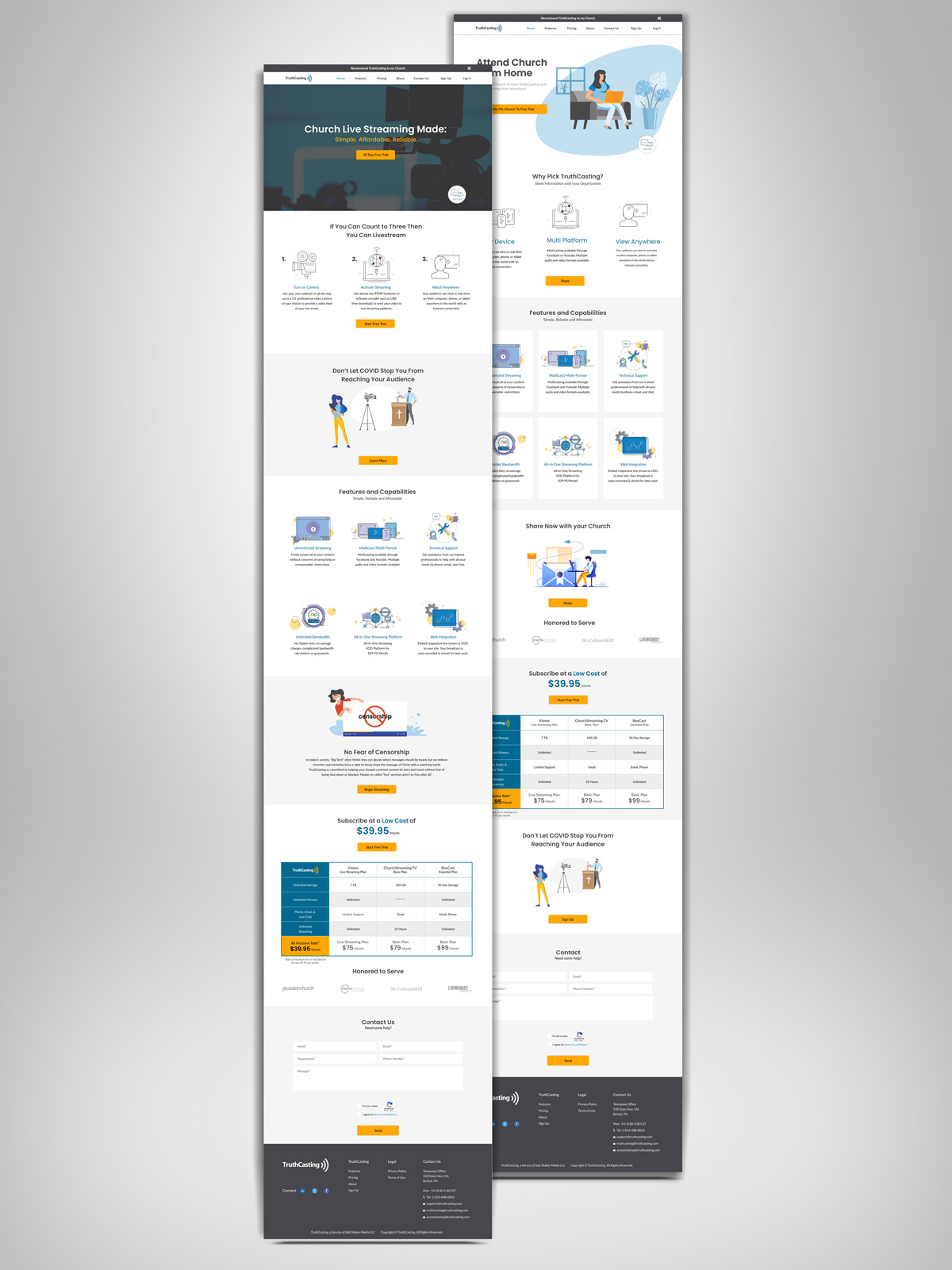
The Problem
How can we design a website that will convince Churches’ to trial or buy our service so they can stream their sermons’ to viewers at home?
Design Process
When working for a new startup, the process isn't always defined from the beginning and can be slightly disorganized. However, we learned and adjusted along the way to get a great result.
-
1
Design
Initial wireframes were created based on the previous website
-
2
Understand
Conducting competitor research in order to understand our market, business needs, and user needs
-
3
Re-Design
Taking our new found information to create research-based designs
-
4
Design Handoff
Gathering our final designs to give to our developer and launch the website
1. Design
This was a difficult process because we didn't do our proper research prior to going straight to designs
Current Site
This was the old site that hadn’t been worked on for quite some time and clearly needed a makeover.
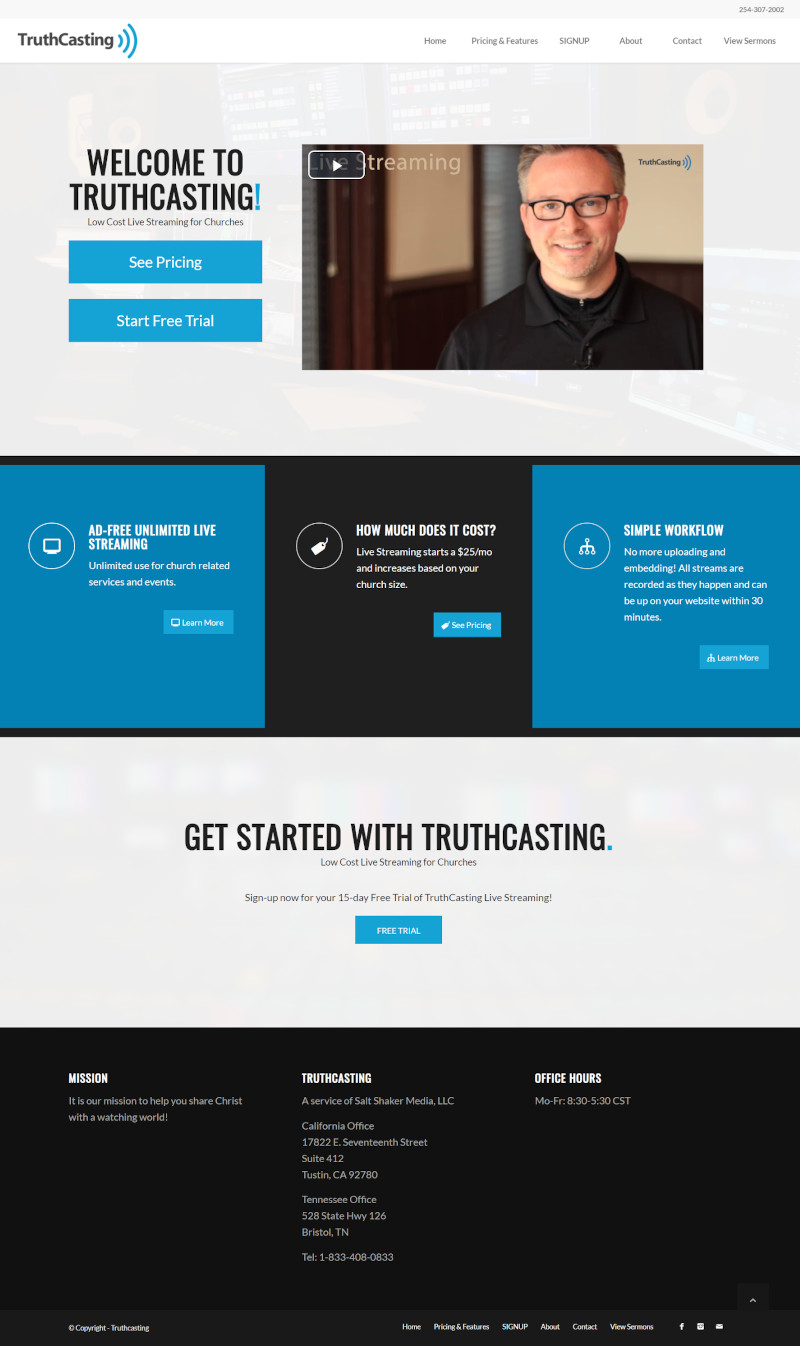
Wireframe
Next, we started going right into wireframes and we took components of the current page and added them to the landing page.

2. Understand
We realized that we didn’t have a good understanding of the business or market. Therefore, we stepped back and decided to do more competitive research.
Competitive Analysis
After a serious investigation of our competitors, we made a spreadsheet breaking down our competitors’ features, prices, our thoughts on their website, and their “calls to action”.
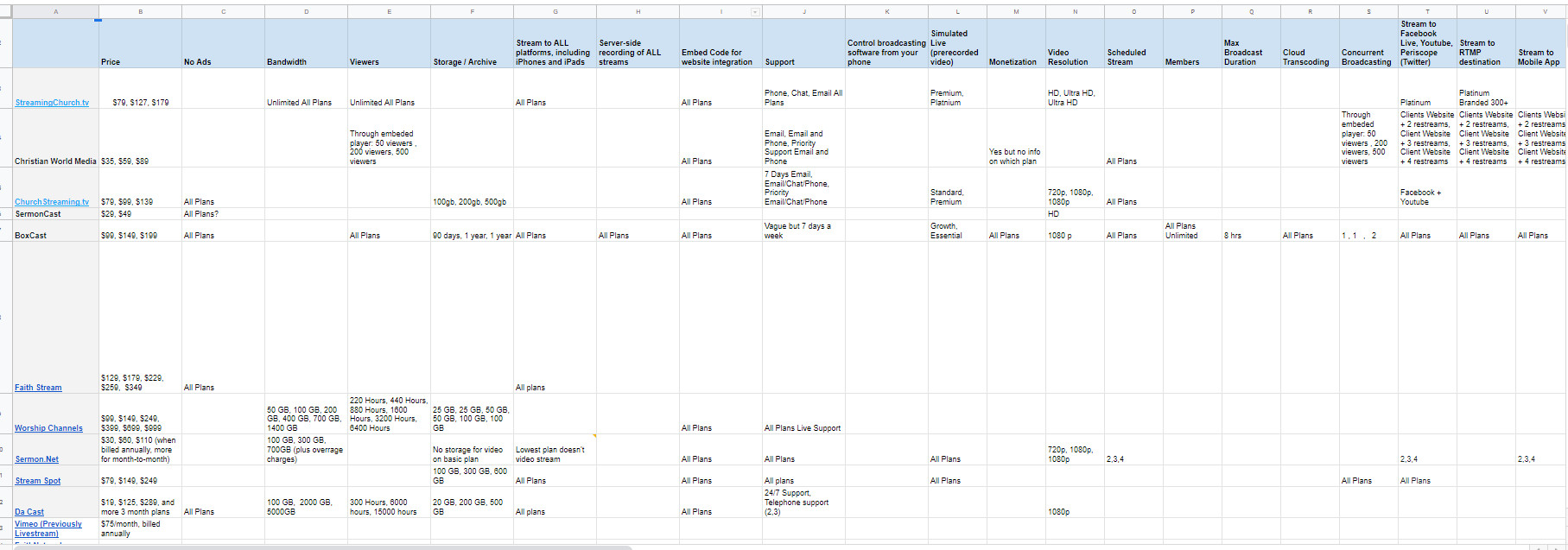
3. Re-Design
We were now in a much better position to make more educated designs
Design Drafts
We went through many stages of feedback and redesign before coming to our final design. Even then, adjustments were constantly being made.
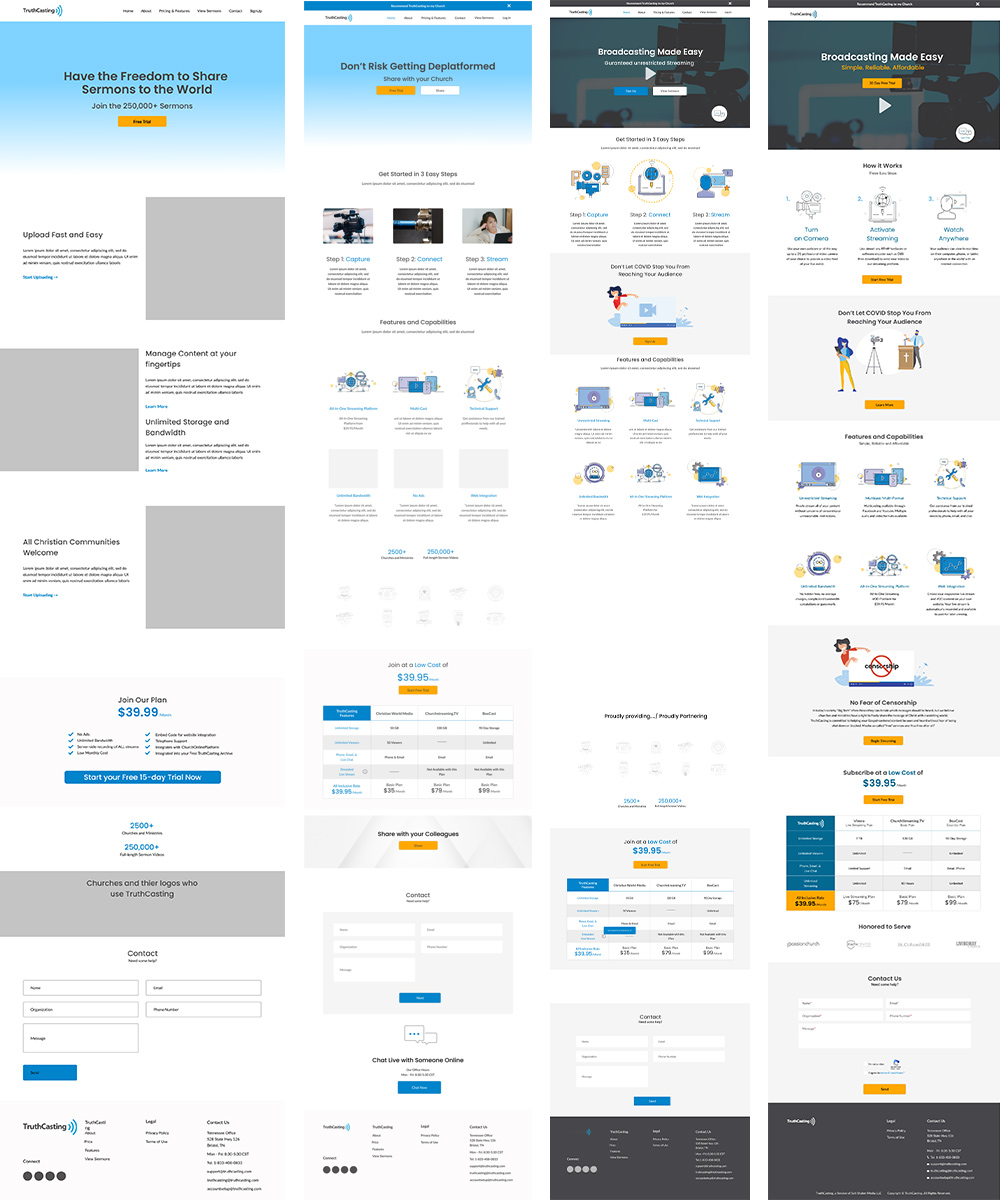
Define
We had reached a point between us designers, our manager, and other parts of the team were arguing on designs based on opinion. I wanted to know if we could base our design on user research but we simply didn’t have time. We got our next best thing, our customer support employee, and asked him who was calling and what they were asking about. He helped bring out information about our users, about who they were and what problems they faced that allowed us to make better design decisions.
Users
Pastors or volunteers with minimal technology capabilities are looking to stream their sermons from their Church, which are primarily smaller and lower budget Churches.
Problem
Users need an easy way to start streaming or users need a new streaming service where they won’t get de-platformed.
High Fidelity Mockups
Now our designs were based on more specific users and their problems in mind we were able to come to final designs.
We agreed to put “Simple, Affordable, Reliable” on the hero image as terms we wanted to be associated with our service. Next, we showed how anyone can stream in just 3 easy steps, and its simplicity. Then, we added a new section devoted to how you were allowed to stream whatever you wanted regardless of religious beliefs.
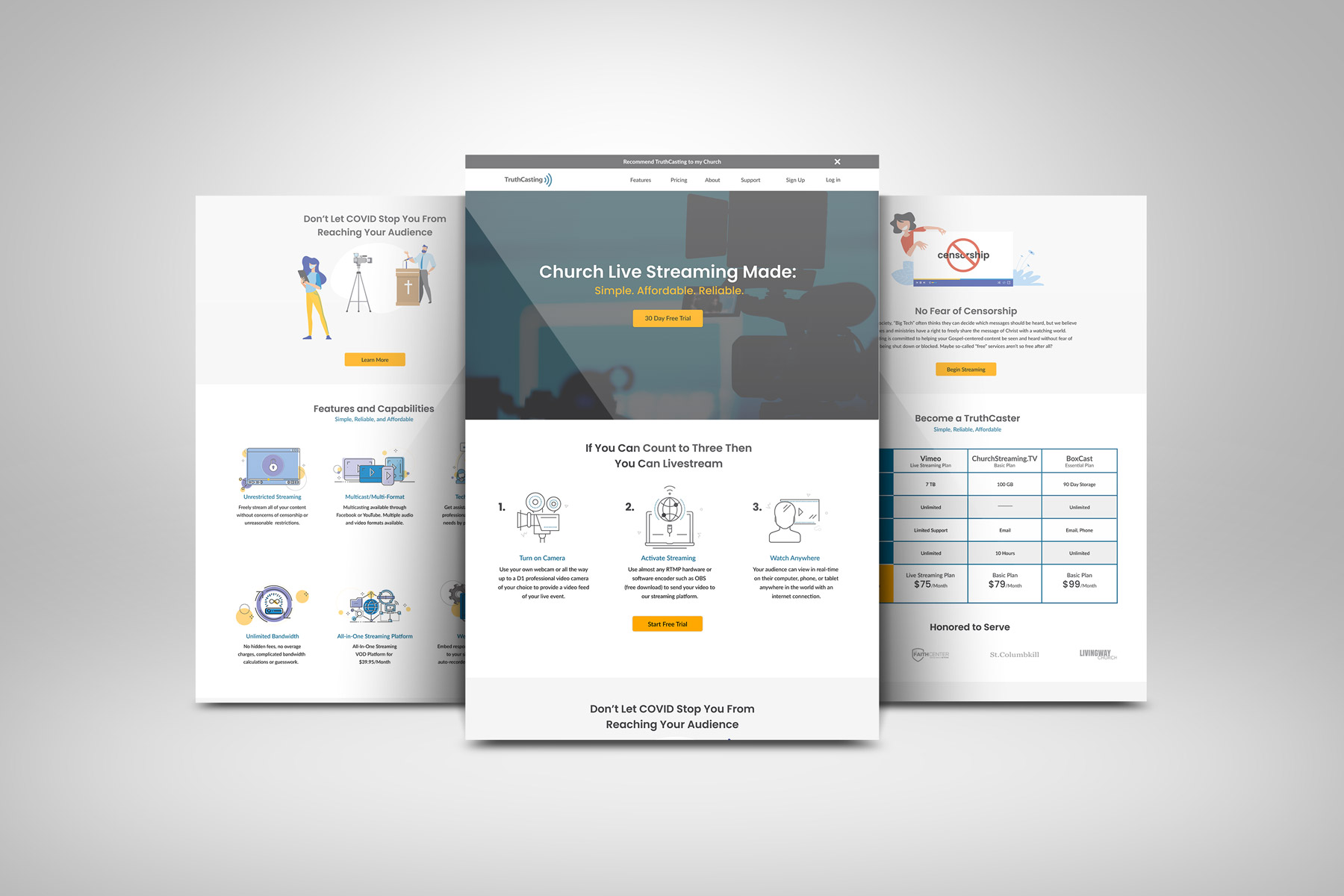
4. Design Handoff
It was difficult to find a system that allowed us, designers, to pass off the final design to the developer.
Handoff
Critiques and requests for changes were being given to the designers and the developer separately which didn’t help with the communication between us. Deadlines were not being met and our developer ended up quitting just before the end of the project, due to a disagreement.
He agreed to finish the last essentials of the project, so in order to make his difficult job as easy as possible, we gathered the changes that needed to be made and prioritized them based on importance. We assigned them to him on Asana, a program we were trying to use, so he was aware of all the changes. We also showed him all the design changes we made on the file, as well as a final design file of all our components.
Future Scope
-
A/B testing: test slightly different organized landing pages and copy to see effects on conversation rates
-
Add in customer success stories
What I Learned
Mostly, I learned the importance of having a design process. We didn’t have a defined process that I think could have speed up our results and avoided all the stress. That being said, you have to adjust the design process according to your goals, timeline, and budget. We didn’t have enough time for a full-fledged research study but instead, we spent half a day doing competitor research. If we had a more specific problem and user in mind, then it would give us a lot more direction in our designs and spent less time on design iterations. That doesn’t mean you need a complete persona or extremely in-depth definition of a problem, but some idea of who we designing for and their problems would have much more useful early on.
Also, I learned how to design for a business where the goal is to primarily sell a service as well as provide a seamless customer experience. The competitor research and working with the marketing team was extremely beneficial and helped us put forth our benefits to the customer as a business through design.
By the end, I also learned that even if you’re a new person or lower title, it’s important to still speak up on your ideas and critiques of the designs and strategy.